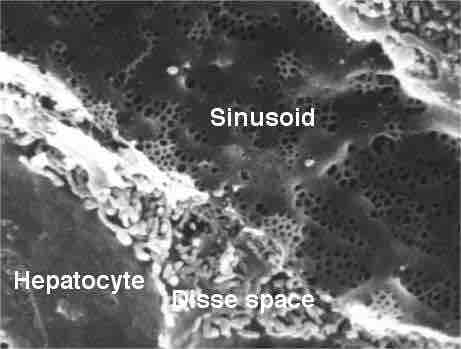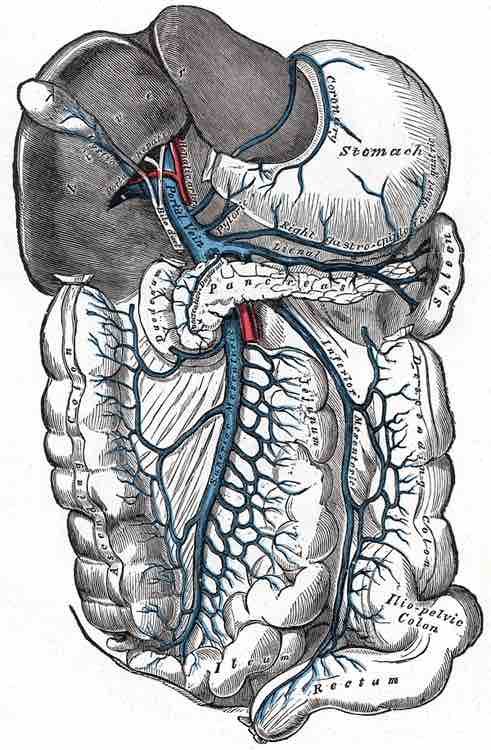The hepatic portal system is the system of veins comprising the hepatic portal vein and its tributaries. It is responsible for directing blood from the region of the gastrointestinal tract between the esophagus and rectum and also includes venous drainage from the supplementary organs such as the spleen and pancreas. It functions to supply the liver with metabolites and ensures that ingested substances are processed in the liver before reaching the systemic circulation, limiting the damage ingested toxins may cause.
The hepatic portal vein supplies about 75% of the blood the liver requires, with the other 25% supplied by the hepatic artery. Blood from the hepatic artery is oxygenated but nutrient-poor compared to that supplied by the hepatic portal vein. Blood from either source passes into cavities between the hepatocytes of the liver called sinusoids, which feature a fenestrated, discontinuous endothelium allowing for the effecient transfer and processing of nutrients in the liver. Since blood received from the hepatic portal vein may be contaminated with pathogens such as bacteria, the liver is rich in specialized immune cells called Kupffer cells that detect and destroy foreign organisms. Following processing, blood collects in a central vein that drains into the hepatic vein and finally the inferior vena cava.
The liver consumes about 20% of the total body oxygen when at rest. That is why the total liver blood flow is quite high at about 1 liter a minute and up to two liters a minute. That is about a quarter of the average cardiac output at rest.

Rat Liver Sinusoid
Sinusoid of a rat liver with fenestrated endothelial cells. Fenestrae are approx 100nm diameter, and sinusoidal width 5 microns. Original mag 30,000x. Note the microvilli of hepatocytes in the space of Disse external to the endothelium.

Hepatic Portal Circulation
Diagram showing the hepatic portal vein and its territory.